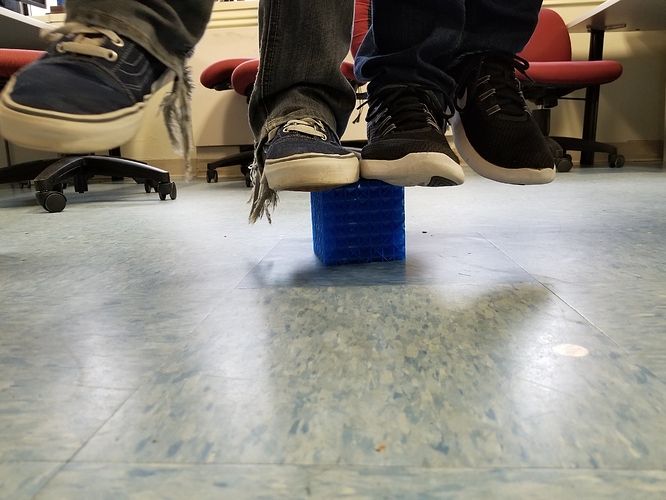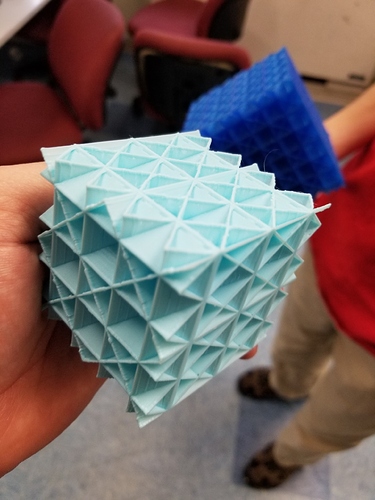Originally shared by Nicholas Seward
I was recently turned on to a foam called Isomax https://engineering.ucsb.edu/news/isomax-world-s-first-metamaterial-achieve-performance-predicted-theoretical-bounds that is supposedly maximally stiff in all directions. It was close to cubic infill so I decided to print a test. In theory, it should be easy to include in Cura with and without adaptive subdivisions thanks to its cubic unit cell.
I don’t know if it is enough better than cubic to warrant the complexity. It was suggested by @Lukas_Suss to have a multiwall infill. (He also brought Isomax to my attention.) I am drawn to the idea of huge substantial infills.
What do you guys think? Is this something you would want/use?
I’d use this.
More strength for less weight (and probably print time) is an attractive win.
It looks like it would start to be useful in relatively large prints given the complexity of the structure and the definition of most F3 prints.
Do you have any feeling yet for how the anisotropic properties of the F3 interact with the theoretically/ideally isotropic properties of the structure?
If I’m understanding the structure correctly from the pictures (I’d love to read the paper but I don’t have access to Nature) then it’s made up of three orthogonal prism lattices? One square lattice and two 60 degree rhombic lattices?
(Based on that understanding:) Would it print better with the prism axis of the square lattice vertical? As best I can tell in my head, the overhang angles seem like they would be more favourable.
@Leo_Dearden I want to say the anisotropy of FFF is the dominant effect. Last time we did some test it seemed that shear strength along the layers is a third of the strength perpendicular to the layers. Maybe this would be better for SLA.
@Leo_Dearden I think of it a cubic cell structure filled with 8 tetrahedrons.


